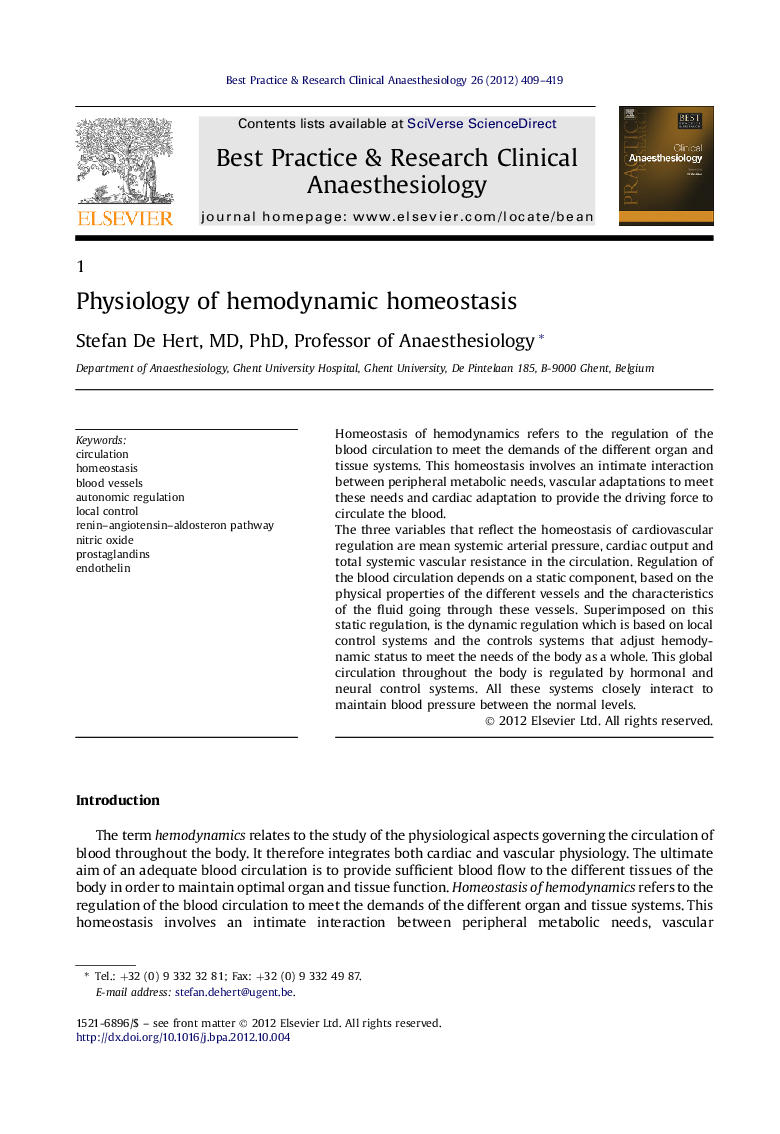| Article ID | Journal | Published Year | Pages | File Type |
|---|---|---|---|---|
| 2748477 | Best Practice & Research Clinical Anaesthesiology | 2012 | 11 Pages |
Homeostasis of hemodynamics refers to the regulation of the blood circulation to meet the demands of the different organ and tissue systems. This homeostasis involves an intimate interaction between peripheral metabolic needs, vascular adaptations to meet these needs and cardiac adaptation to provide the driving force to circulate the blood.The three variables that reflect the homeostasis of cardiovascular regulation are mean systemic arterial pressure, cardiac output and total systemic vascular resistance in the circulation. Regulation of the blood circulation depends on a static component, based on the physical properties of the different vessels and the characteristics of the fluid going through these vessels. Superimposed on this static regulation, is the dynamic regulation which is based on local control systems and the controls systems that adjust hemodynamic status to meet the needs of the body as a whole. This global circulation throughout the body is regulated by hormonal and neural control systems. All these systems closely interact to maintain blood pressure between the normal levels.
